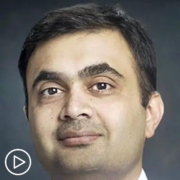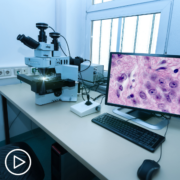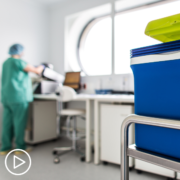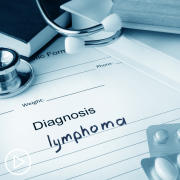DLBCL Treatment Approaches for Newly Diagnosed and Relapsed/Refractory Patients
DLBCL Treatment Approaches for Newly Diagnosed and Relapsed/Refractory Patients from Patient Empowerment Network on Vimeo.
What are current diffuse large B-cell lymphoma (DLBCL) treatment approaches for newly diagnosed and relapsed/refractory patients? Expert Dr. Amitkumar Mehta outlines treatment options, explains how treatments have evolved, and discusses patient monitoring following treatment completion.
Dr. Amitkumar Mehta is Director of the Lymphoma Program and CAR T Program and Medical Director of the Clinical Trials Office at O’Neal Comprehensive Cancer Center at UAB. Learn more about Dr. Mehta.
Related Resources:

An Expert’s Perspective on What it Means to Thrive With DLBCL |

|

|
Transcript:
Katherine:
What treatment options are available for DLBCL patients?
Dr. Mehta:
So, it’s a very loaded question because, you know, front-line and relapse and field has evolved immensely over a period of years. But I’ll tell you that in a new diagnosis of DLBCL, still R-CHOP or R-EPOCH-based treatments are standard of care. We have – as a medical community, we have tried multiple times to improve upon the foundation of R-CHOP or R-EPOCH. But we have failed, unfortunately, that R-CHOP is still the best treatment.
There are multiple clinical trials, which are building on R-CHOP adding novel agents and see whether it gets better or not. So, therefore, when we discuss, we discuss always to ask about whether there is any clinical trial option. If the DLBCL comes back, which happens in about 30 to 40 percent of cases, there are so many treatment options.
There are novel options including bone marrow transplant. The CAR-T treatment, tafasitamab (Monjuvi), different CD19-directed therapies, or loncastuximab (Zynlonta) CD19-directed antibody drug conjugate. There are so many – polatuzumab (Polivy) – options available. Therefore, it is important to have a discussion with your provider that “Okay. Well, if it has come back, of course, it is disappointing. But what are my options, clinical trial options, novel therapeutic options,” so that we can work as a team with betterment and hoping to cure even if it has come back, a large cell lymphoma.
So, there are so many treatment options out there. I did not touch upon the clinical trial. There are so many clinical trials going on within amazing agents, which are very effective in DLBCL.
Katherine:
How are DLBCL patients monitored after treatment is completed?
Dr. Mehta:
Very importantly, if you go in remission and after the initial treatment or in a relapse setting, we have to keep an eye. And, of course, we want to detect if it comes earlier so that we can start the treatment earlier. Typically, in the beginning, in the initial two years, the follow-up could be closer, every four to six months we get together.
We have labs done. Sometimes we do scans, making sure that a lymphoma – there is no evidence of it coming back. So, the initial two to three years the follow could be closer. And then, as we space out, the follow spaces out further. And then, after you have a five-year mark where the lymphoma has not come back, the chance of it coming back goes further down. So, then I start follow-up annually on those patients. Yeah.


















